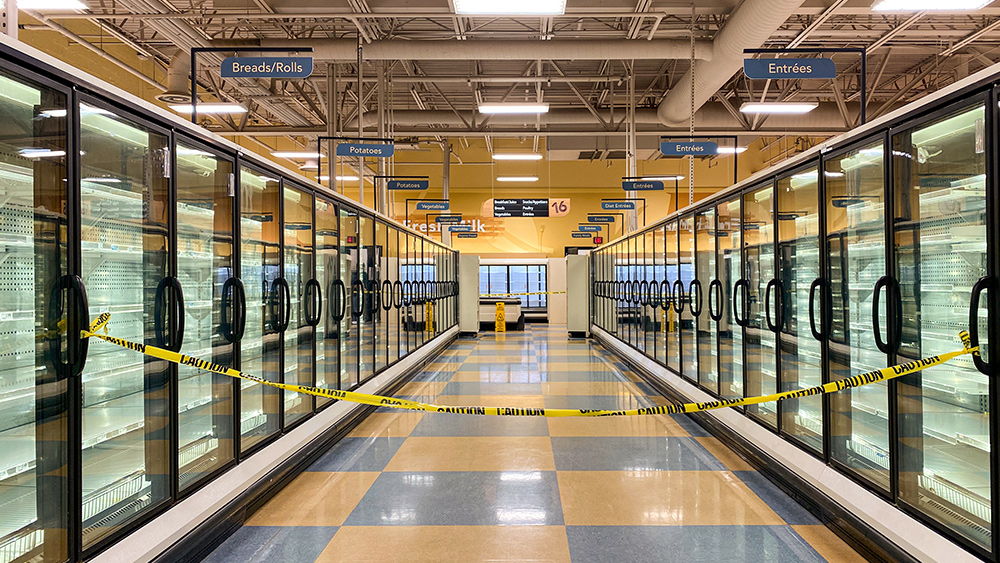A handful of large food conglomerates control almost everything you eat
02/22/2021 / By Ethan Huff

Beginning in the 1980s, America’s food supply started to undergo some serious changes. A few large agribusiness companies began gobbling up the little guys, which we were told would make food cheaper and more abundant. The reality 40 years later is that more Americans are “food insecure” than ever before.
According to 2019 data from the Department of Agriculture (USDA), more than 35 million people living in the United States did not have reliable access to affordable, nutritious food that year. This figure skyrocketed even higher once the Wuhan coronavirus (Covid-19) hit.
Because only a handful of large companies control the foods we all eat, price fixing has become a problem. Corporate leaders in collusion with one another jack up prices behind closed doors, and only a select few of them ever get caught – and the problem is only getting worse the more the food industry consolidates.
“Consolidation has placed key decisions about our nation’s food system in the hands of a few large companies, giving them outsized influence to lobby policymakers, direct food and industry research and influence media coverage,” write Philip H. Howard and Mary Hendrickson for The Defender.
“These corporations also have enormous power to make decisions about what food is produced how, where and by whom, and who gets to eat it. We’ve tracked this trend across the globe.”
Some of the largest among them are retailer Walmart, food processor Nestlé, and seed and chemical giant Bayer.
Did coronavirus put the final nail in the coffin of America’s food supply, or is there still hope?
This seed-to-table model of corporate control ensures that the oligarchs make all the decisions about who eats and how much they eat. It also gives a select few the ability to pull the levers and decide who does not eat.
“Many subsidiary firms often are controlled by one parent corporation and engage in ‘contract packing,’ in which a single processing plant produces identical foods that are then sold under dozens of different brands – including labels that compete directly against each other,” Howard and Hendrickson further explain.
“With consolidation, large supermarket chains have closed many urban and rural stores. This process has left numerous communities with limited food selections and high prices – especially neighborhoods with many low-income, Black or Latino households.”
According to Feeding America, as many as 50 million Americans, including 17 million children, are victims of this consolidated control over food. During the first half of 2020 when the Chinese virus really started to make headlines, demand at food banks grew by more than 48 percent.
At the same time, supply chain disruptions caused farmers to dump milk down the drain, leave produce rotting in fields, and euthanize livestock that could not be processed at slaughterhouses – all because of restrictions that were imposed as a result of the WuFlu.
“We estimate that between March and May of 2020, farmers disposed of somewhere between 300,000 and 800,000 hogs and 2 million chickens – more than 30,000 tons of meat,” reports The Defender.
The reason why the amount of food waste was so dramatic has everything to do with consolidation. Because only a few companies control the process, the shutdown of one major slaughterhouse, packing plant, or field has a much greater impact than if these food production resources were diversified into more hands.
“In our view, a resilient food system that feeds everyone can be achieved only through a more equitable distribution of power,” the report adds.
“This in turn will require action in areas ranging from contract law and antitrust policy to workers’ rights and economic development. Farmers, workers, elected officials and communities will have to work together to fashion alternatives and change policies.”
To keep up with the latest news about the funneling of all control over food into the hands of a wealthy few, visit Tyranny.news.
Sources for this article include:
Tagged Under: agriculture, conglomerates, consolidation, coronavirus, corruption, covid-19, food, food collapse, food independence, food supply, harvest, starvation, Tyranny
RECENT NEWS & ARTICLES
COPYRIGHT © 2017 PENSIONS NEWS




















